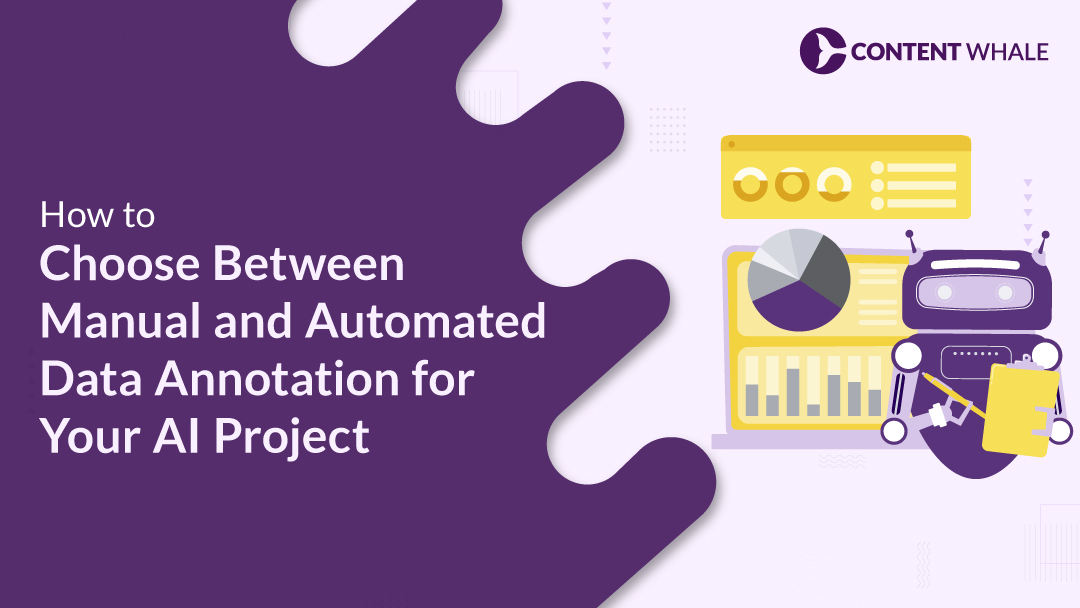Data annotation for NLP is the backbone of effective natural language processing. By labeling AI training data, it guides machine learning algorithms to understand context, intent, and meaning.
Annotated text enables essential NLP applications like entity recognition, semantic analysis, chatbot training, and sentiment detection. Over 180 zettabytes of data will be created by 2025.
Without quality text annotation, NLP models struggle with real-world ambiguity. Nearly two thirds of deployed systems fail due to poor annotation. With quality data annotation for NLP, supported by supervised learning, deep learning models, and entity recognition, AI solutions become accurate, scalable, and ready for production.
To understand its impact better, let’s first look at what data annotation is and the different types it includes.
1. What is Data Annotation and its Types?
Data annotation for NLP is the process of labeling datasets to train models in recognizing and interpreting language. It’s critical in preparing AI training data for machine learning and Natural Language Processing (NLP) applications.
Types of Data Annotation in NLP:
- Text Annotation: The process of labeling parts of text with information such as named entities, keywords, or sentiment. This helps models perform tasks like entity recognition and semantic analysis.
- Sentiment Analysis Annotation: Assigning labels to text that reflect emotional tone such as positive, negative, or neutral, enabling models to understand user sentiment.
- Entity Recognition: Identifying and classifying key pieces of information, such as names, locations, or dates, to improve understanding.
- Part-of-Speech Tagging: Labeling words with grammatical categories like nouns, verbs, and adjectives, allowing models to parse sentences effectively.
| # | Annotation Type | Purpose | Impact |
| 1 | Text Annotation | 🧠 Understands context and meaning | ✅ Improves classification and extraction |
| 2 | Entity Recognition | 🏷️ Tags names, places, organizations | 🤖 Enhances chatbot and assistant accuracy |
| 3 | Sentiment Analysis | 💬 Detects emotional tone in text | 📈 Boosts feedback and sentiment analysis |
| 4 | Part-of-Speech Tagging | 📚 Assigns grammatical roles | 🌐 Improves translation and text generation |
| 5 | Semantic Annotation | 🔗 Maps word relationships and meaning | 🔍 Powers semantic search and Q&A tasks |
2. How Important is Data Annotation for NLP Applications
Data annotation services for NLP are essential for training accurate machine learning models. It directly impacts how well NLP applications perform tasks like text annotation, entity recognition, and semantic analysis.
Why it matters:
- Foundation of NLP Models: Annotated AI training data helps supervised learning models understand language patterns and intent.
- Boosts AI Accuracy: From chatbots to sentiment analysis, well-labeled data improves model responses and user experience.
- Supports Complex Tasks: In sectors like healthcare or law, annotation enables NLP tools to interpret specialized language effectively.
Example: In healthcare, annotated datasets have helped deep learning models extract symptoms and diagnoses from patient records, improving predictive accuracy.
3. Challenges in Data Annotation for NLP
Data annotation for NLP faces several challenges due to the complexity of human language and the demand for accuracy in labeling AI training data.
Key challenges include:
- Data Ambiguity: Words often have multiple meanings. Ensuring accurate text annotation for tasks like semantic analysis and entity recognition is time-consuming.
- Quality & Consistency: Inconsistent labels can harm machine learning performance across NLP applications.
- Cost & Time: Manual annotation, especially for chatbot data or domain-specific text, is resource-heavy.
- Human-in-the-Loop (HITL): While HITL speeds up annotation and improves quality, it still requires close human oversight alongside automation.
| # | Challenge | Description | Quick Fix |
| 1 | Data Ambiguity | Words have multiple meanings | Use trained annotators + AI tools |
| 2 | Cost & Time | Manual work is slow and expensive | Automate with AI to save resources |
| 3 | Inconsistent Labels | Varying annotations hurt model accuracy | Add quality checks and reviews |
| 4 | Domain Knowledge Gaps | Some terms need expert understanding | Involve specialists or train annotators |
4. Future Trends in Data Annotation for NLP (2025)
Data annotation for NLP is evolving rapidly in 2025, driven by the demand for faster model training and more accurate natural language processing outputs.
Key trends include:
a) AI-Assisted Annotation
AI-assisted tools now play a major role in text annotation, reducing manual effort while increasing speed and precision. These systems use machine learning to suggest labels, allowing human annotators to focus on refinement—making NLP applications more efficient to develop.
b) Automation of Data Annotation
With automation becoming more advanced, semi-automated workflows are increasingly used to handle large-scale AI training data. This is especially useful for tasks like entity recognition and chatbot training, where speed and consistency are critical.
c) Continuous Learning and Adaptation
As language and usage patterns shift, deep learning models require ongoing updates. Real-time data annotation pipelines help NLP systems stay current with evolving terminology, slang, and domain-specific content.
Conclusion
Data annotation for NLP is what powers intelligent, real-time language understanding in AI systems. From chatbots to sentiment analysis, annotated AI training data enables accurate, responsive NLP applications. As AI advances, the demand for precise, scalable annotation will keep rising.
At Content Whale, we specialize in delivering high-quality, consistent data annotation and labeling using advanced tools and proven methods. Our services help your machine learning models perform better—faster.
Get in touch with us to scale your NLP projects with expert data annotation solutions.
People Also Asked
1. What is data annotation in NLP?
Data annotation for NLP involves labeling training data so that machine learning algorithms can understand and process human language. This labeled data allows NLP applications like chatbots, translation tools, and sentiment analysis systems to accurately interpret language patterns and improve overall model performance.
2. Why is data annotation important for machine learning models?
Data annotation is essential for training machine learning models in understanding specific tasks. In NLP applications, annotated data helps models learn language patterns, improving tasks like entity recognition and semantic analysis, leading to better AI performance in real-world applications.
3. What are the main challenges of data annotation for NLP?
The complexity of human language poses significant challenges for data annotation for NLP. Ambiguity, cost, and maintaining consistency across large datasets are key issues. The use of data labeling methods like human-in-the-loop approaches helps address these challenges in Natural Language Processing.
4. How does AI assist in the data annotation process?
AI tools help automate parts of the annotation process. AI-assisted data annotation reduces manual workload by labeling data more quickly. These tools assist human annotators in refining the data, ensuring higher accuracy in text annotation and other tasks.
5. What future trends can we expect in data annotation for NLP?
Future trends include the increased use of AI-assisted annotation, automated data labeling methods, and continuous learning models. These developments will make Natural Language Processing tools more efficient and ensure that machine learning algorithms can adapt to new language trends.





